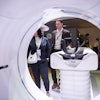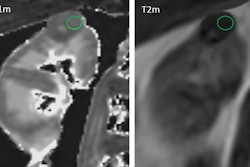CHICAGO -- A deep-learning AI algorithm designed to determine the malignancy status of renal lesions less than 4 cm could reduce overtreatment and undertreatment of kidney cancer, according to research presented on a snowy Sunday at RSNA 2023.
The AI functions by taking a preoperative CT scan as input, localizes the tumor region by segmenting it, and then predicts the probability of malignancy in a fully automated fashion, according to Aakanksha Rana, PhD, of Johnson & Johnson in New Brunswick, NJ.
“The outcome was good given our small dataset,” Rana said, adding that there is much work to be done. “It’s very surprising to see how little work there is with these small lesions.”
Approximately 80% of all kidney cancers consist of renal cell carcinomas (RCC), with 42% categorized as stage 1A. The size of these lesions makes them hard to diagnose, so Rana and colleagues set out to predict malignancy.
Data from 289 histopathology-confirmed T1a patients were used to train and validate the deep learning-based pipeline that works in two phases: localizing the kidney and lesion regions (built on an nnUnet model), and classifying benign and malignant (built on a 3D Mobilnet model). Manual segmentations served as ground truth.
For classifying the lesions, the AI achieved an AUC of 0.87 and an accuracy of 0.82. For identifying benign, the AI showed a sensitivity of 0.89 and a specificity of 0.81. Validation metrics also included dice which achieved "a remarkable segmentation" dice score of 0.83 for precise localization, according to Rana.
This work emphasizes that there is an opportunity to reduce the diagnostic challenges of T1a RCCs considering their prevalence. The end-to-end "localize to classify" cascade of convolutional neural networks (CNNs) used to segment the tumor for precise localization was effective at differentiating T1a renal masses as benign or malignant. However, more work is needed to validate the tool on a larger dataset taking into account other factors.
In a case where a radiologist may determine a small renal mass as uncertain, for example, the deep-learning model could potentially assist by localizing the region and issuing an AI prediction probability score. Rana said her team’s work is a stepping stone for others interested in focusing on T1 renal masses seen in CT images.





















